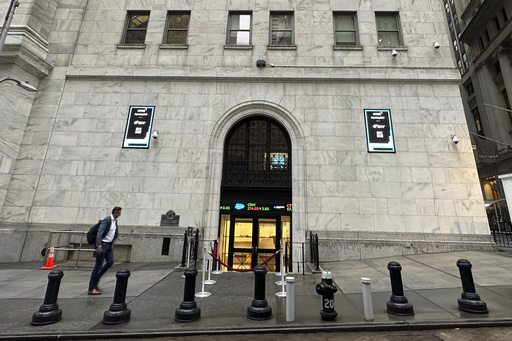
BANGKOK — Asian markets opened predominantly on a positive note following a record-setting close for U.S. stocks at the end of a successful trading week. Futures for U.S. markets and oil values also experienced an uptick.
Hong Kong’s Hang Seng index stood out with a decline of 0.6%, landing at 20,869.39 points, while the Shanghai Composite Index experienced a gain of 0.8%, reaching 3,288.32. Additionally, the A-share index in the Shenzhen market rose by 2.2%.
The positive movement in mainland Chinese markets was influenced by recent reductions in the one-year and five-year Loan Prime Rates, which serve as benchmarks for loans. Lower rates can alleviate financial pressures on borrowers, particularly in the property development sector, which has faced challenges due to prior restrictions on excessive borrowing practices.
Experts, like Zichun Huang from Capital Economics, commented on the importance of government spending to spur demand, stating that “heavy lifting” must come from fiscal support. The Chinese Finance Ministry has expressed intentions to increase expenditures in the coming months. Despite this, analysts express skepticism regarding the potential effectiveness of fiscal easings, fearing that it may lead only to moderate and temporary improvements in economic activity.
In other Asian markets, Japan’s Nikkei 225 index rose 0.3%, closing at 39,078.33, while South Korea’s Kospi climbed 0.8% to reach 2,614.75. Australia’s S&P/ASX 200 index was up 0.7%, ending at 8,340.40.
Oil prices saw a slight uptick following a decline last week as fears diminished regarding potential Israeli strikes on Iranian oil facilities in retaliation for recent missile attacks from Iran. Disruptions to Iranian exports could significantly affect crude availability, especially to China and other markets. However, concerns surrounding the demand from China continue to weigh on oil prices.
As of early Monday, U.S. benchmark crude experienced a rise of 38 cents, reaching $69.07 per barrel in electronic trading on the New York Mercantile Exchange. Meanwhile, Brent crude, the global benchmark, increased by 31 cents to settle at $73.37 per barrel.
In currency markets, the dollar decreased to 149.23 Japanese yen compared to 149.57 yen from the previous Friday. The Japanese yen has recently weakened, driven by expectations that the Bank of Japan’s interest rate hikes may proceed more slowly than previously anticipated. The euro also saw a slight decrease, dropping to $1.0865 from $1.0867.
On Wall Street, records were achieved once again on Friday, with the S&P 500 growing 0.4%, surpassing its previously set all-time high earlier in the week, and closing at 5,864.67. The Dow Jones Industrial Average made a minor gain of 0.1%, finishing at 43,275.91, while the Nasdaq composite rose 0.6% to 18,489.55.
Trading activity on Wall Street remained generally stable, marking the end of a sixth consecutive week of gains for the S&P 500, its longest winning streak of 2024. Strong economic data has fueled optimism that the U.S. economy may sidestep severe inflation without leading to a painful recession, contrary to what many investors had anticipated. With the Federal Reserve currently decreasing interest rates to sustain economic momentum, optimistic forecasts suggest further stock market growth.
Netflix was a significant contributor to this market rally, witnessing an impressive 11.1% increase following its report of better-than-expected quarterly profits, despite a slowdown in new subscribers. This performance helped to counterbalance a 5.2% drop in CVS Health shares, which projected earnings that fall short of analyst expectations.
In the outlook for future decisions from the Federal Reserve, traders are aligning with the anticipation of a quarter-point interest rate cut at the next meeting in November. Prior expectations pointed towards a more substantial half-point cut; however, positive economic indicators have led to a shift in sentiment. The current federal funds rate is maintained between 4.75% and 5%.
